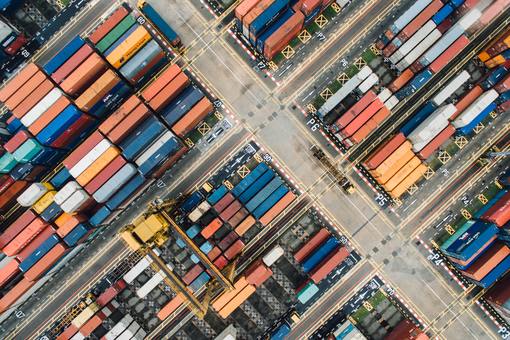Falsification and Piracy of Trademarks: The Role of Customs
The border control in international trade has a great importance for the protection of industrial and intellectual property rights, especially trademarks, as it is a very effective preventive measure against counterfeiting and counterfeiting Piracy.
Nowadays, businesses with counterfeit goods are booming due to online commerce and the facility of buyers that they can purchase any product in another country from his home, with a simple click and a more affordable price than if he bought it in a normal market. But even if the customer is not aware, this type of shopping carries social, environmental, ethical and healthy consequences.
In addition, this type of illicit business, apart from having consequences for the consumers, also has others consequences mainly for the manufacturers, retailers and distributors who suffer losses in its benefits.
The most disadvantaged sectors in the counterfeiting of products are, first the fashion sector, with numerous counterfeits of clothing, shoes and accessories, second, the technology sector, with counterfeits of mobile phones and accessories.
Thus, not only the existence of internal laws on counterfeiting, but also the border control and international cooperation are carried out as measures against the violation of industrial and intellectual property rights. When a good is introduced into certain territory, such good is under the control and supervision of customs, where a series of specific actions is carried out with the aim of combating the trade of counterfeit goods.
It is very important to understand, in order to protect our trademark, it is not only valid to obtain the registration right of our trademark. If we receive merchandise from abroad, buying product abroad, for example in China and using our trademark, it will be susceptible of being counterfeit. We need to ask for legal protection when we plan to sell our products abroad, in this way our trademark and products could be available in other countries or regions legally.
For this reason, it is essential to register the TRADEMARK before the Customs, either the Spanish or the European Union as a unit and regional entity, obtaining information of suspicious merchandise.
At European level, the customs procedure is governed by Regulation (EU) No. 608/2013 of the European Parliament and of the Council of 12 June 2013 on the monitoring by the customs authorities of the respect of customs duties of intellectual property; and in Commission Implementing Regulation (EU) No. 1352/2013 of 4 December 2013 laying down the forms provided for in Regulation (EU) No. 608/2013 of the European Parliament and the Council, about the monitoring by the customs authorities of the respect of intellectual property rights.
In the Spain it is regulated in Order EHA / 2343/2006, of July 3, concerning the intervention of the customs authorities in cases of declaration of goods suspected of infringing intellectual property rights.
First of all, the trademark must be registered, submitting an application for trademark intervention, in order to have the protection offered by the regulation, it is necessary to accept an application for trademark intervention. Such a request can be made at the national level by offering protection in the Member State or at European level as discussed above. It is appropriate to incorporate into the application specific details which will enable the customs authorities to detect the original or falsified goods, thus facilitating the work of customs officials. The application must be accepted by the General Customs Management Services of the Customs Department of the AEAT with a one-year renewable period.
Since 2014, there is a European database called COPIS (Anti-Counterfeit and Anti-Piracy Information System), where all intervention applications and trademark registrations are registered.
What happens when a possible counterfeit is detected? Detention of counterfeit goods: the functions of surveillance and customs control are carried out by the “Customs Surveillance Service” (SVA) which belongs to the AEAT and the “Fiscal Service”, specialized section of the Civil Guard for the Tax Shelter, who develop filters to determine which goods are suspected of infringing intellectual or industrial property rights. Those goods are inspected by the Risk Analysis Units (UARs), units composed by customs authorities of the Tax Agency and by Civil Guard officers. The dispatch actuaries are in charge of preparing the Retention File with the data of the document that has been retained and that will become parts of COPIS.
At that moment, relevant information is transferred to the interested parties. When the goods have been withheld, the notifications for the declarant or the holder of the goods shall be made by the customs authorities within one working day if there is a request for intervention in the procedure. It will be also communicated the same day to the owner of the protected right. The notifications will be made up of information about the quantity, nature of the goods and images. In case that the holder requests it in advance, he can also be informed of the names and direction of the addressee, sender, declarant or owner of the goods, customs regime, origin and destination of the goods.
The holder who has the grant of the request for intervention, can recognize the merchandise within ten working days following the date of notification by the customs. If it does not exercise such right, the customs will estimate the consent of the destruction of the merchandise.
The customs intervention file can be finalized in three possible ways:
- Destruction of goods under customs control and under the responsibility of the owner of the right. It takes place when the holder of the decision confirms that the goods infringe his rights, without the need for a court order if the right holder and the owner of the goods agree.
The costs of storage, handling and destruction of the merchandise will be borne by the holder of the decision.
- Judicial action: the holder of the protected right may initiate legal proceedings by filing a complaint in the court corresponding to the territorial demarcation where the physical evidence was found, in the case of not reaching an agreement with the declarant and remaining the goods to judicial disposition.
- Pick up of goods: If the owner has verified the authenticity of the goods or the retention periods have expired without taking any decision, the customs will release the goods so that the importer can recover them.
Given the spectacular increasing in the phenomenon of Piracy, CASAS ASIN offers complete advice on the protection of its marks against imitations and forgeries, from its retention in the Customs to any border or its location in the points of sale, to the judicial procedures that Necessary to bring an end to infringements and obtain compensation for damages.





